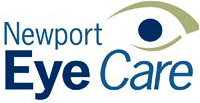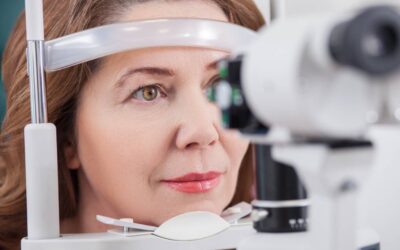January is Glaucoma Awareness Month, an important time to learn about this potentially blinding eye disease and factors that can place you at a higher risk. Glaucoma is a group of eye diseases that damage the optic nerve and can lead to permanent vision loss if left untreated. While glaucoma is highly treatable, it’s important to be aware of your risk and know when to seek medical help.
In this blog post, we’ll discuss some of the risk factors associated with glaucoma and why it’s important to see an optometrist to protect your vision.
Risk factors of glaucoma
Glaucoma affects approximately 3 million Americans every year, according to the National Eye Institute. It occurs when pressure builds up in the eye due to a buildup of fluid, causing damage to the optic nerve. Common risk factors include:
- Age (over 60)
- Family history of glaucoma
- Medical conditions like diabetes or high blood pressure
- Ethnic background (African American or Hispanic)
- Long-term use of certain medications such as steroids
Other factors that may increase your risk include a previous eye injury or surgery, using contact lenses for long periods of time, and having poor vision in one eye compared to the other.
Seeing an eye doctor regularly
It is important to schedule regular comprehensive eye exams to detect any changes in vision early on and reduce your risk of developing glaucoma. During your exam, your doctor will check the health of your eyes by looking at your eye structures and measuring your intraocular pressure (IOP). High IOP puts people at greater risk for glaucoma and other serious vision issues. If necessary, they may also perform additional tests such as tonometry or visual field testing to assess your individual risk for glaucoma.
Prevention & treatment
If you have any of the risk factors listed above or have been diagnosed with glaucoma, there are steps you can take to reduce your risks and manage any symptoms you may be experiencing from the condition. Medications and lifestyle modifications like reducing stress levels and eating a balanced diet can help reduce one’s risk for developing the disease.
Eye drops may also be prescribed by your eye doctor to help manage IOP levels as necessary. Surgical procedures such as laser trabeculoplasty may also be recommended depending on the severity of one’s condition.
While some people are more at risk of developing glaucoma than others, everyone should be aware of their personal risk so that they can work with their doctor on prevention methods if necessary. An annual comprehensive eye exam is crucial to keeping tabs on one’s ocular health and reducing risks associated with glaucoma and other vision problems, so make sure to book yours today.




